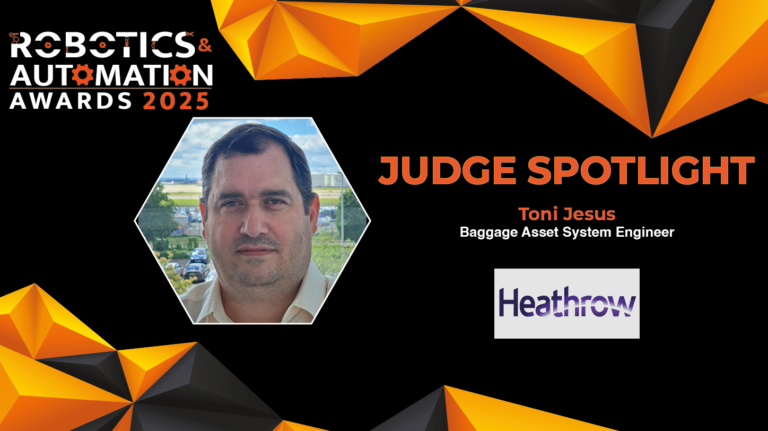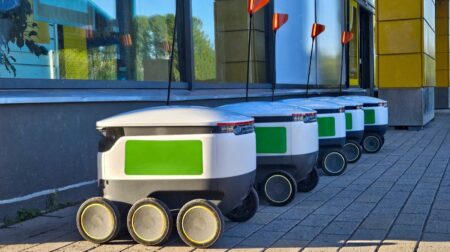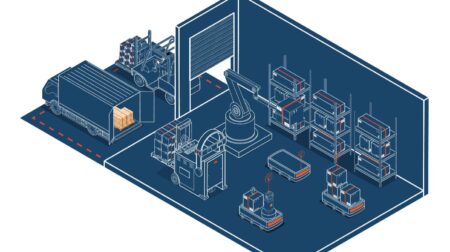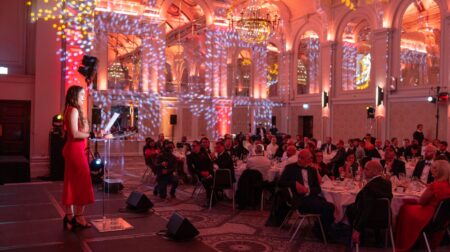With entries for Robotics & Automation Awards 2025 now open, Robotics & Automation Magazine has launched an exclusive series of Q&A interviews with the expert panel of judges responsible for evaluating this year’s submissions.
Over the coming weeks and months, the magazine will spotlight each judge – a dynamic mix of thought leaders, technical specialists, and business strategists drawn from across the robotics, automation, AI and smart manufacturing sectors – to explore their backgrounds, industry outlooks and what they’ll be looking for in an award-winning entry.
From end users and integrators to researchers and investors, this year’s panel represents a diverse blend of practical and academic expertise – all of which will help identify the most transformative, scalable, and commercially viable innovations driving the next era of automation and intelligent systems.
Our next judge is Toni Jesus, baggage asset system engineer at Heathrow., a role he has held since 2013. He previously spent more than 25 years working in industrial automation engineering across multiple industries and countries.
He participates in the BOOST – Baggage Innovation Working Group (BIWG) initiative and is involved in the identification of business cases for the application of new technologies and the development of efficiencies for automated processes.
This includes the trialling of Drones, Autonomous Guided Vehicles and Artificial Vision systems for airport environment.
Name: Toni Jesus
Job title: Baggage Asset System Engineer
Organisation: Heathrow
How does your professional background align with the Robotics & Automation Awards’ goal of recognising excellence in automation and intelligent technologies?
My background meets and exemplifies the recognition of excellence in automation and innovation. The combination of deep technical experience and active innovation leadership, along with my active engagement in presenting out-of-the-box concepts, opportunities, and use cases, aligns seamlessly with the values and objectives of such recognition. I routinely assess business cases and participate in the testing of AGVs, drones, robots and automated systems, with special focus in efficiency and improvement.
What current trends or technologies in robotics and automation are you most excited about, and how do you anticipate seeing them reflected in this year’s entries?
The advancements in artificial vision technology, combined with the specialisation of artificial intelligence (AI), are on the path to becoming one of the major disruptors of automation technology as we know it. I anticipate greater versatility and simplification in the deployment of artificial vision, with minimal parameters and user guidance provided through web servers. This includes versatility in applications, offering a wide range of selectable options, whether embedded or downloadable. I also foresee a high level of integration of these technologies into programmable automation controllers (PACs), accompanied by the emergence of specialised functions that could potentially impact IEC 61131, 61499, and 61508 standards, as the boundaries between OT and IT domains become increasingly blurred as a result of multi-functionalities. It is also my expectation that the combined technology of artificial vision and AI will simplify the automation topology and associate costs for design and deployment, while increasing reliability.
From your perspective as a judge, what qualities will distinguish a truly standout submission?
For a submission to truly stand out, it must demonstrate clear benefits in solving a complex problem, improve or even transform a process. It should represent an advancement in the automation or robotics field, with the potential to accelerate and or simplify the deployment of systems, shaping new standards and pushing the boundaries of existing ones, while defining new perspectives to automation and robotics.
How do industry awards such as these help foster innovation, investment and commercialisation in the robotics and automation sector?
It is my conviction that the Robotics & Automation Awards are instrumental in promoting innovation and fostering the generation of new ideas, encouraging industry collaboration and development by showcasing and highlighting products and trends that will certainly impact industries, while nurturing the advancement of automation and industry standards.
Can you share an example of a robotics or automation innovation – either recent or historic – that you believe has had a lasting impact on the way industries operate?
OPC (OLE for process control) and its upgraded successor OPC UA opened the doors to interoperability, systems integration, data dissemination and exchange throughout all levels of the automation pyramid and connected systems. Allowing to move from supplier’s specific systems, to multi-vendors architectures.
What advice would you give to companies and individuals submitting an entry this year?
One of the most important factors in revealing a great innovation is how it is showcased. Be creative in how you portray the problem being addressed and the solution being provided, giving preference to visual presentations and representations. Storytelling gives you the opportunity to present a memorable journey, but also to project the future. Remember that audiences consist of diverse individuals that will interpret your message based on their own background, therefore use a clear, articulated, and simple language, with limited use of acronyms and jargons. Always support your innovation with measurable data and evidence. I wish you all the best in this 2025 Robotics & Automation UK Awards!
Achievements and innovations in retail and e-commerce, healthcare and pharmaceuticals, food and beverage, automotive, transport & logistics, and more will be celebrated at the Robotics & Automation Awards on 29 October 2025 at De Vere Grand Connaught Rooms in London. Visit www.roboticsandautomationawards.co.uk to learn more about this unmissable event for the UK’s robotics and automation sectors!






